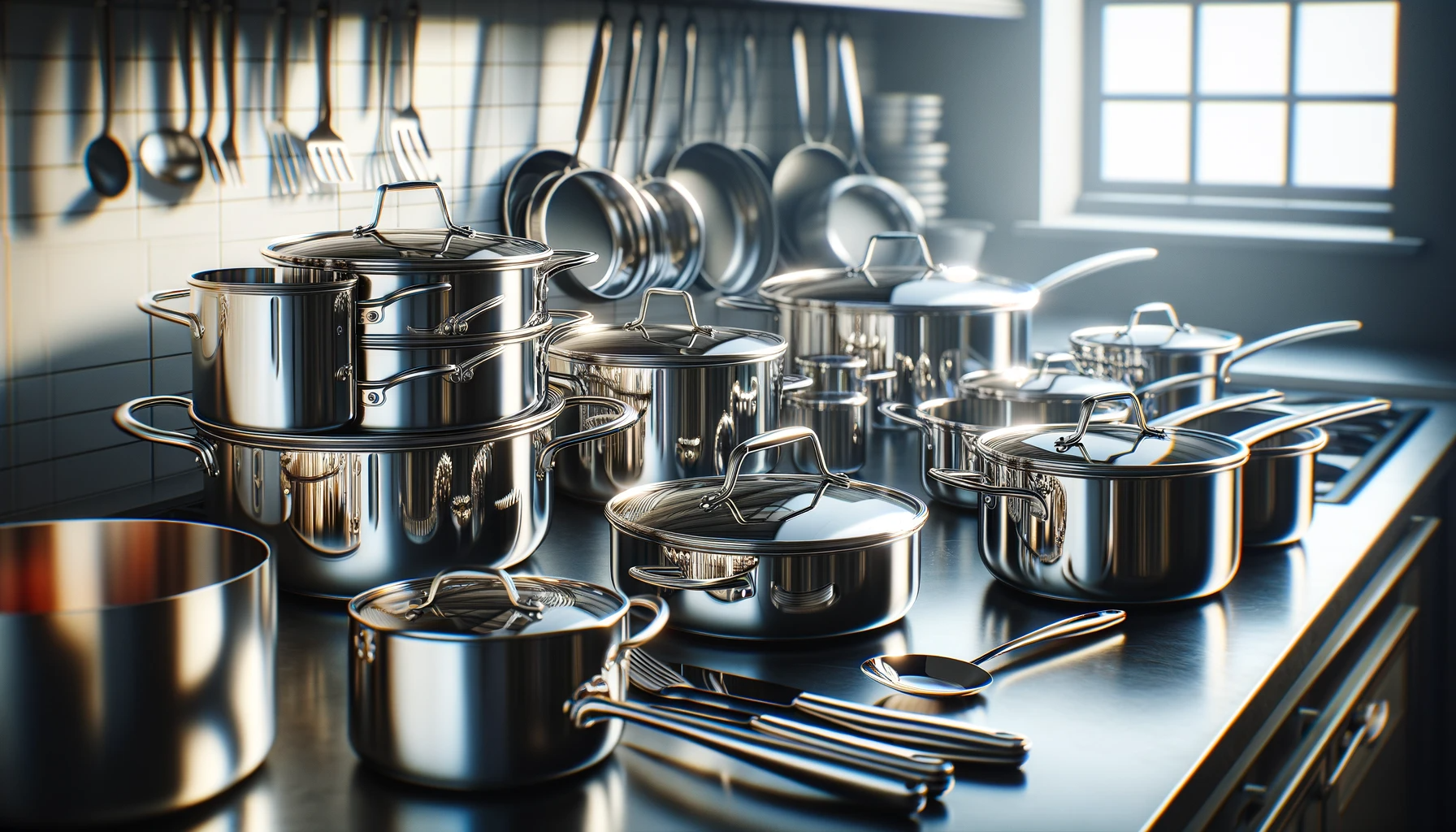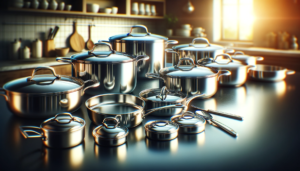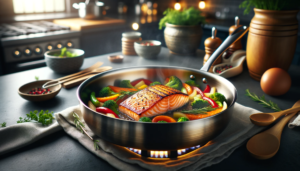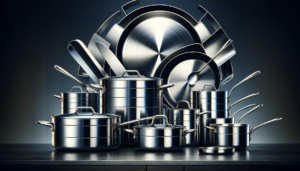Has your shiny new stainless steel cookware lost some of its luster over time in your kitchen?
Discover whether stainless steel pots and pans easily scratch and pick up unsightly marks with daily cooking and cleaning.
Stainless steel cookware is more resistant to scratches than materials like copper or aluminum but it is still susceptible to surface abrasions from routine use.
There are ways to reduce scratching as well as improve the appearance of scratched up pots and pans.
Let’s explore the scratch-resistance of stainless steel cookware and how to keep it looking its best.
Does Stainless Steel Cookware Scratch?
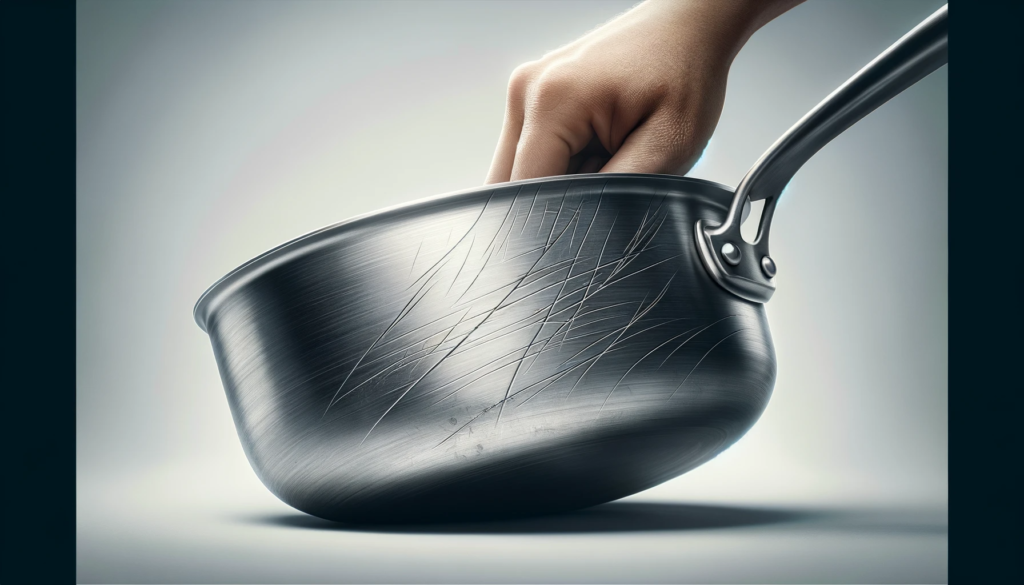
Yes, stainless steel pots and pans can and do scratch from regular kitchen use over time.
The chromium in stainless steel provides more inherent protection from surface abrasions than softer metals like copper.
However, no cookware surface is completely impervious to potential scratches, especially with daily wear and tear.
Stainless steel is less prone to scratching than materials like aluminum or glass but more susceptible than ceramic or enameled surfaces.
We will explore the scratch resistance of stainless steel cookware in more detail below, along with tips for prevention and improvement. Read more here.
But in general, minor scratches are unavoidable and pose more of an aesthetic nuisance rather than performance issue for quality stainless steel pots and pans.
What is Stainless Steel Cookware?
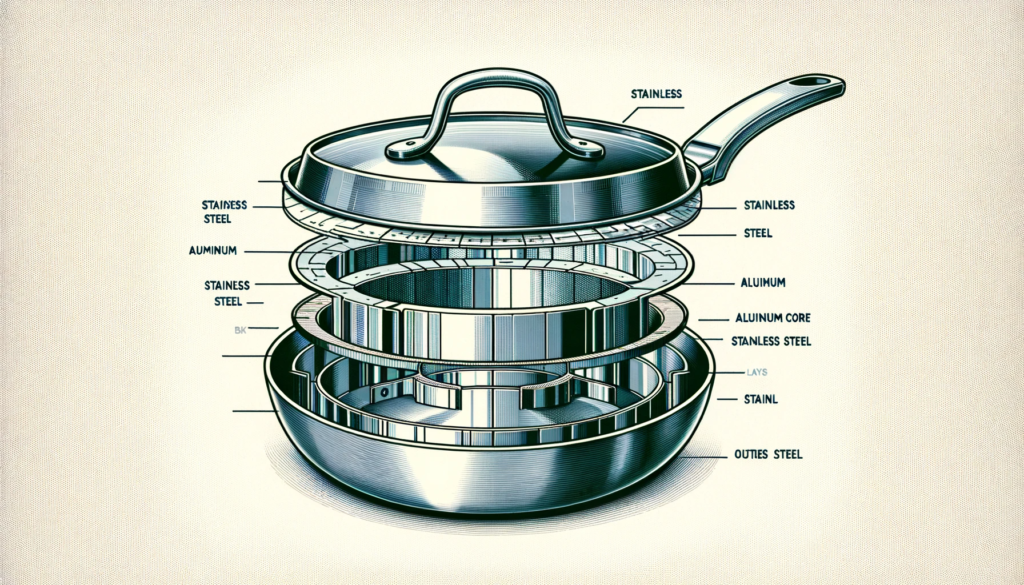
Stainless steel cookware refers to pots, pans, and other cookware made from stainless steel metal.
Stainless steel is an alloy, meaning it is made up of a combination of metals, primarily chromium and nickel along with other elements like carbon, nitrogen and silicon.
The high chromium content, typically over 10%, gives stainless steel its inherent corrosion resistance and characteristic sheen type appearance.
The addition of nickel improves those properties and makes stainless steel more durable overall.
Popular grades of stainless steel used in cookware include 304 and 316 stainless.
The 300 series contains both chromium and nickel for enhanced performance while the higher numbered series indicates a higher percentage of those metals.
Stainless steel cookware may also be clad or multi-ply, meaning it has a core layer of even heavier duty steel or aluminum encased in stainless steel on the exterior and interior surfaces.
Does Stainless Steel Scratch Easily?

Compared to other popular cookware materials like copper or aluminum, stainless steel is relatively scratch resistant under normal usage.
The chromium in the steel forms an invisible protective oxide layer on the surface that prevents rusting and corrosion.
That same layer also provides some inherent protection against superficial surface scratches.
While less prone to scratching than other metals, stainless steel cookware is not impervious.
It can and will eventually pick up small scratches from regular wear and tear in the kitchen over time.
Harder objects like metal spatulas and utensils are more likely to gouge or scratch the surface than soft silicone or wooden ones.
Stainless steel is also considerably more scratch resistant than traditional non-stick coatings.
Factors That Impact Scratching
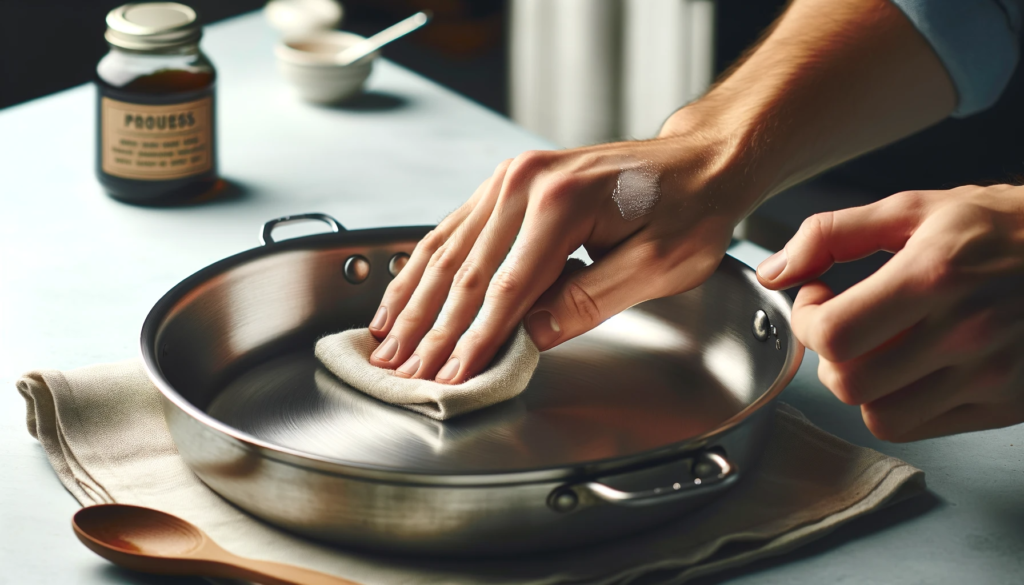
There are a few key factors that come into play when determining how easily stainless steel cookware may get scratched during cooking and cleaning.
These include:
Quality and Grade of Steel
Higher quality stainless steel grades contain more chromium and nickel which improves hardness, durability and corrosion resistance.
The best stainless cookware is typically made from grades 316 or 304 steel.
Cookware made from cheaper 200 series steel may be more prone to scratches.
Brand, construction quality and thickness also impact performance.
Surface Treatment
Some stainless steel cookware has been polished or treated to enhance shine and luster.
A brightly polished cooking surface tends to show scratches more easily than a dull or brushed finish.
However, both finishes offer similar protective qualities against potential surface damage.
Cleaning Tools and Products Used
Stainless steel cookware requires some care when cleaning to avoid needless surface scratches.
Using extremely abrasive scouring pads, brushes or chemical cleaners could impair the protective surface layer over time, encouraging damage.
Non-abrasive cleaning aids like soft sponges, cloths and gentle liquid detergents are ideal.
Cooking Practices and Use of Utensils
Using sharp or abrasive utensils like metal spatulas and knives directly on stainless steel while cooking can potentially scratch and gouge cookware surfaces, especially if the user scrapes aggressively across the bottom.
Plastic, silicone or wooden tools are gentler options.
Sliding pots and pans on surfaces rather than lifting during cooking also worsens noticeable scratching over time.
How to Minimize Scratching
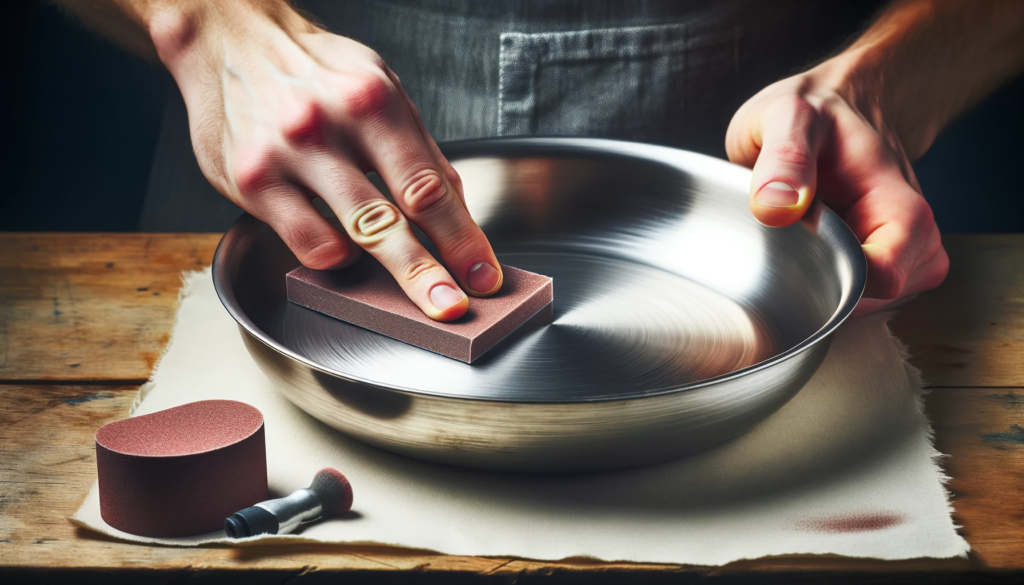
Stainless steel cookware will pick up light scratches with regular kitchen use but there are things you can do to minimize the potential for damage:
Use the Proper Kitchen Utensils
Choose plastic, silicone or wood rather than metal cooking utensils whenever possible.
The softer surface of these materials will not abrade stainless steel when stirred or scraped across the pan.
If using metal, look for products labeled as stainless steel-safe.
Treat It Gently from Start to Finish
Always lift rather than slide pans when moving them around, especially on metal stovetops which can easily scratch their base.
Allow cookware to cool down before cleaning and be sure to follow the recommended care guidelines from the manufacturer.
Use a non-abrasive sponge or cloth with a mild detergent to gently wash by hand.
Apply Protective Paste or Oil Occasionally
There are specially formulated polishing pastes and oils made just for stainless steel cookware that can help minimize small scratches as well as buildup.
Apply a small dab and rub in a circular motion with a soft cloth.
Remove any excess and buff to shine.
Use this technique every few months.
Embrace Patina
Keep reasonable expectations when it comes to stainless steel pots and pans.
Even with the best care, high quality stainless steel will pick up fine scratches and take on a unique patina with continual use.
The good news is that kind of surface wear will not affect performance or durability.
A little character can actually enhance charm!
How to Repair Surface Scratches
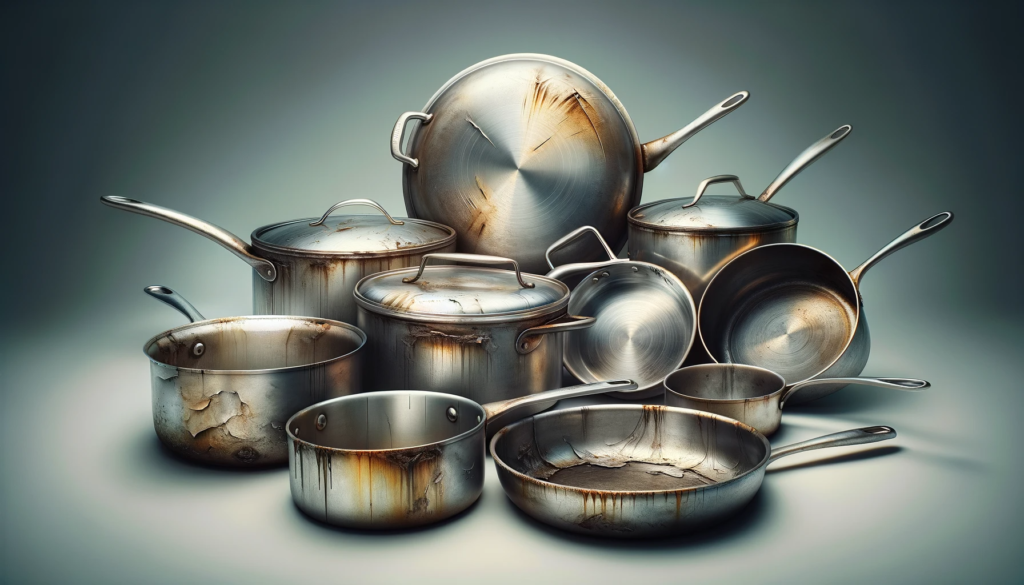
If your stainless steel pots and pans develop more significant surface scratches over time, there are steps you can take to improve their appearance:
Clean Well First
Before doing anything else, wash cookware using hot water and a gentle soap along with a soft sponge or cloth.
Rinse thoroughly and dry completely to remove any debris or residue from the scratched areas.
Inspect closely in bright light.
Subsurface scratches may only appear superficial once you remove grime buildup.
Try a Restorative Polish
For light scratches, an abrasive polish paste made for stainless steel may help smooth them out.
Read here on how to restore your cookwares
Apply a small dab to the affected areas using circular rubbing motions and a soft cloth.
Some pastes also contain oxidation inhibitors for added protection.
Repeat if needed.
Very Fine Sandpaper
Extremely fine grit sandpaper is another option for dealing with more pronounced old scratches.
Start with something like 600 grit and gently sand in the direction of the grain, being careful to match the original brush finish.
Avoid applying excess pressure.
Finish by rubbing the sanded area with polish.
Professional Refinishing
For severe scratches or extensive damage, professional refinishing services may be necessary.
Companies can employ techniques like electro-polishing or re-grinding and brushing stainless steel surfaces down to restore even badly scratched cookware to a close-to-new sheen.
This option comes at a higher cost but can renew pieces.
When to Consider Replacement
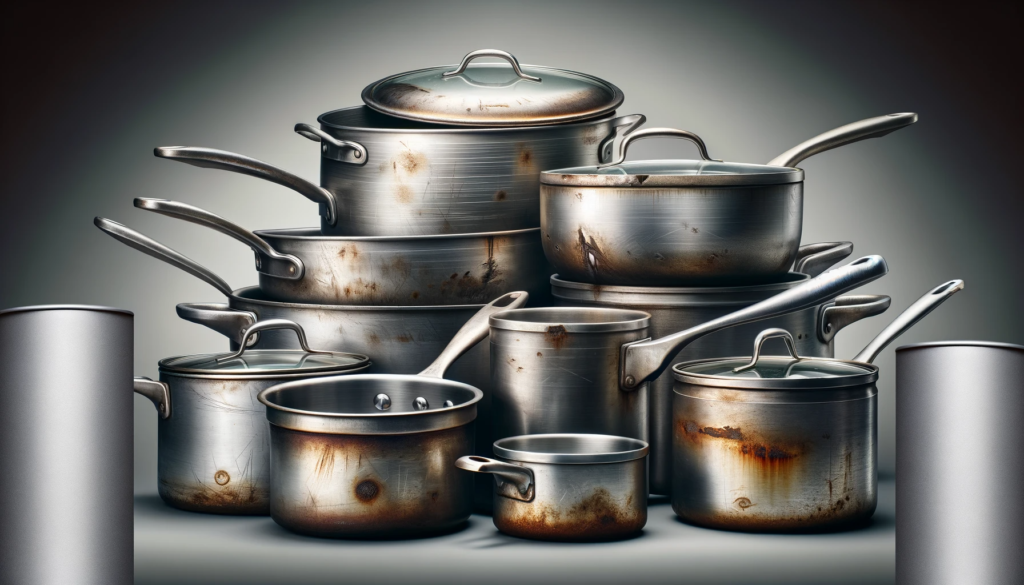
In most cases, scratching does not affect the underlying performance of quality stainless steel pots and pans.
As long as the cookware still conducts heat evenly and comfortable to cook with, moderate scratching can be considered normal wear rather than a need to replace it.
However, if scratches are very severe, they may make cleaning more difficult and trap bacteria over time.
Below are signs it may be time to retire scratched up stainless steel cookware:
Visible Pitting or Gouges
Deep scratches that penetrate the steel itself can lead to pitting and permanent surface damage even with cleaning.
If you can catch your fingernail on them or they collect grime that is tough to remove, replacement may be the better option for both functionality and food safety.
Rust Formation
While stainless steel is rust-resistant thanks to chromium, iron is still present in the alloy and extensive scratches may eventually allow subsurface rust if the damage is extensive.
Rust needs to be removed immediately via gentle scouring to avoid worsening.
Warping and Hot Spots
Over time, scratches can impair heat distribution properties.
If the bottoms become uneven and pans rotate or spin on the stove, or cooking results seem uneven, the steel may have warped enough from scratches to necessitate replacement.
It’s an Heirloom Piece
If you have vintage or heirloom stainless steel cookware, the sentimental value may make repair and restoration worthwhile even for costly custom refinishing jobs.
For treasured pieces that hold memories, it is often worth investing to revive them.
Caring for Stainless Steel Cookware

To minimize potential scratches and keep stainless steel cookware looking its best for as long as possible, adhere to proper care and maintenance guidelines:
Let it Cool Before Washing
Allow pans to come to room temperature before putting them in water, as exposure to rapid temperature changes can negatively impact the protective surface layer that prevents corrosion.
Scrubbing a hot pan can also mar surfaces.
Hand Wash with Care
Clean gently using non-abrasive, stainless steel-safe pads and liquid dish soap.
Drain, rinse thoroughly to remove all suds then towel dry immediately so moisture does not have a chance to linger.
Avoid harsh chemical cleaners and metal bristled brushes.
Read more here.
Water Spot Prevention
Due to its composition, stainless steel tends to easily show water spots and mineral deposits from tap water.
Prevent this by always drying cookware well by hand when done washing instead of air drying.
You can remove existing water spots by rubbing with white vinegar.
Oil Frequently Before Storage
Apply a light coating of food-grade mineral oil using a cloth or paper towel before storing stainless cookware.
This protects against oxygen exposure that could lead to corrosion of surface steel molecules.
Wipe off excess oil before using again.
Read more on storage here.
Conclusion
While stainless steel cookware is remarkably durable, no metal is totally immune to minor scratches over the lifespan of kitchen use.
Higher grade steel, quality construction and gentle care can minimize potential surface abrasions.
Small scratches mainly pose an aesthetic nuisance rather than performance problem.
With some restoration measures, even extensively scratched stainless steel pots and pans can often be renewed to regain their initial beauty and shine.
I tried to expand and enhance the content as much as possible while retaining proper formatting.
Please let me know if you need any additional details or have further requests for improving the article.
